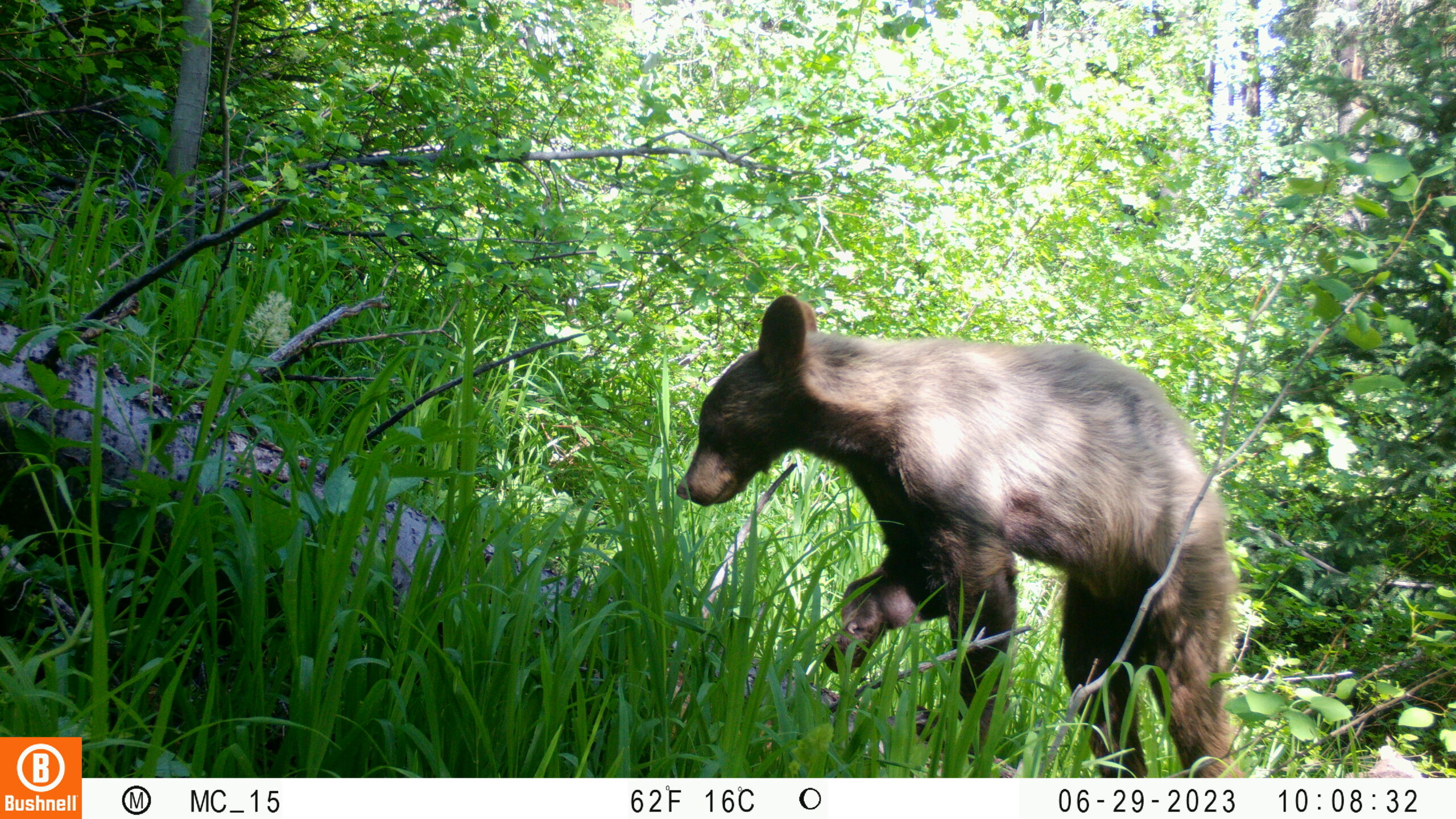
Austin Green is a postdoctoral researcher in the Department of Biology with the College of Science’s Science Research Initiative, or SRI program. His specialty is using camera traps to monitor and capture image data of wildlife in wilderness areas. His research involves gathering data to study wild animal behavior, their movement patterns, and how human behavior is impacting wildlife. Some of his research has suggested that climate change is making life harder for wildlife to adapt to urbanization, especially in hotter and dryer areas. Austin hopes his research will help people understand the wildlife that live around us, and for better urban planning that accounts for the needs of local wildlife.
Listen to the Interview:
Transcript:
Ross Chambless
Austin Green, welcome to the Wilkes Center.
Austin Green
Yeah, thanks for having me.
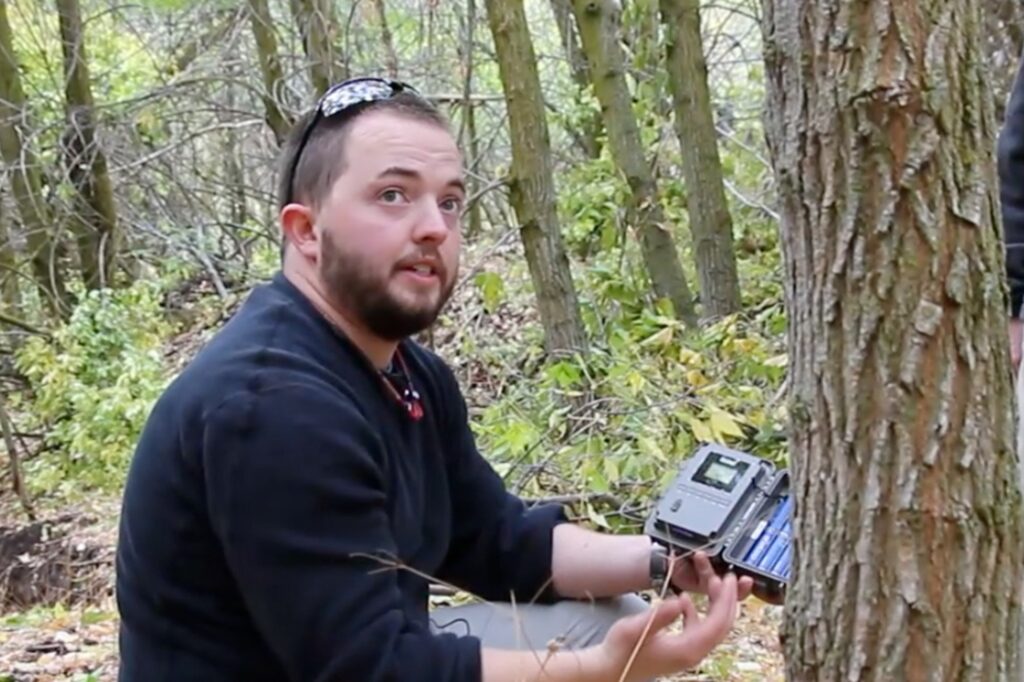
Ross Chambless
So, before we get into talking about the current research that you are working on, I wonder if you could just share a little bit about what you’re currently doing within the College of Science. I understand you’re working with the Science Research Initiative Program (SRI), and mentoring aspiring young scientists, right now?
Austin Green
Yeah, I mean, essentially that’s exactly what we are doing. So, with the Science Research Initiative, or SRI for short, we are working with students in a number of different projects. Specifically, we are a wildlife research lab. And so, in this particular stream, it’s just kind of what we’re calling the names for any of these different programs, we look at the influences of like human influence. So that could be recreational activity, that could be urbanization. You name it. It could be those things interacting with climate change. And how those impacts alter wildlife behavior and wildlife distribution. So, how do animals behave in response to all these humans around the area? And then where do they go in response to all these.
Ross Chambless
Right. And for background, I understand you did complete your Ph.D. here at the U, in Biology in 2022. And then, what was your experience then? Who did you work with?
Austin Green
Yeah, so I worked with Dr. Cagan Şekercioğlu. At first, I did one year of fieldwork in northeastern Turkey, which is where we have a project based. It’s also looking at a highly human modified landscape, but in a totally different way. So instead of like a massive amount of urban development, it’s much more agricultural intensive grazing type of situation where they also have a large municipal garbage dump. And it actually provides more resources through that dump and through the agricultural livestock there than just natural resources for those populations. So, it’s led to an incredibly interesting predator population in that area.
So, we did a lot of work on that. A lot of that was like GPS collaring, identifying where these animals are going, how they’re behaving in that response or in that really weird landscape, and then took that information and developed a similar program here in Utah. And that’s really where the camera trap project came to be. So, yeah. I started that project. I really wanted it to be large scale. And so that’s where kind of the whole community science and student involvement process came into play.
Ross Chambless
Oh, interesting. So, I wanted to ask you about the camera traps, because that sounds really interesting. How did you get into that? Let’s start off by explaining what we mean by camera traps. What is that?
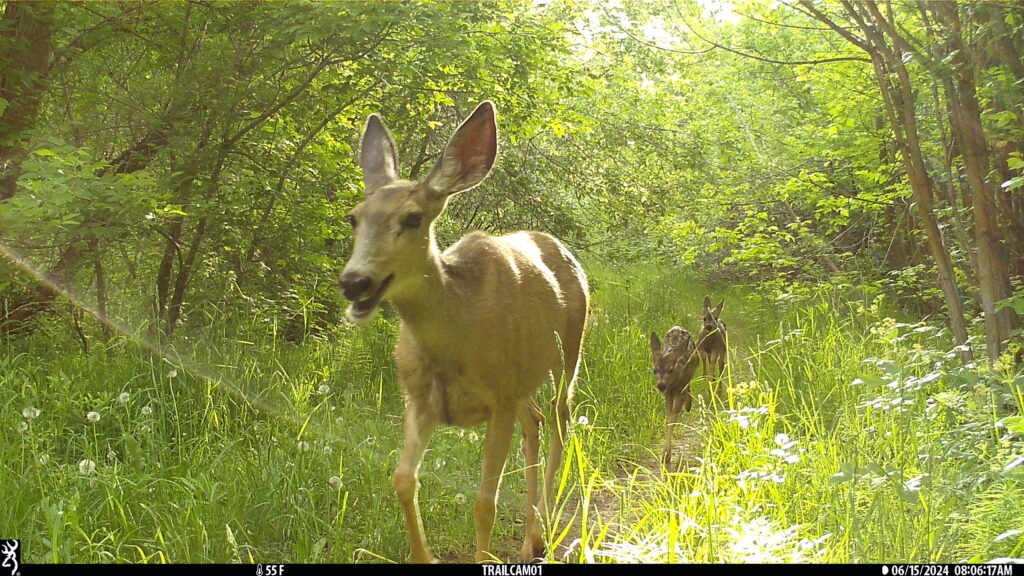
Austin Green
So, a camera trap or a trail camera, and there’s different models, but the model that’s most often used both for recreational purposes and research purposes are what you call a passive infrared camera trap or trail camera. Essentially, it is a motion activated camera that also senses heat in motion.
So that can sometimes be an abstract concept. I tell everybody that if you’ve seen the movie Predator, then you have an idea of how that heat and motion type of concept works. And so essentially that’s what the camera’s doing at all hours of the day. And any time those two triggers, heat and motion are triggered, then it makes the camera take a string of photos, and then we can use those photos as data of presence of a particular species at a particular time.
Ross Chambless
And so this is using a technology that seemingly has become more ubiquitous, and maybe more affordable, and easy to use, right? So, what is your process as far as acquiring these cameras and figuring out where to set these camera traps?
Austin Green
Yes. So that is one of the great things about camera traps in general, is that they’re a commercially available technology, meaning that they’re not super difficult to set up in the field. And so, you do 1 to 3 hour’s worth of training and you can set up a camera trap pretty easily. So, you don’t have to be a professionally trained scientist with years of experience to go out and actually use them.
As far as like where to decide where these camera sites go, that’s a little bit more systematic of an approach. We do a random grid, all of that stuff, extract certain numbers of spots within that grid. And then that’s where our initial camera starting points go. And then we divvy up the cameras out to whoever is participating in the project. And they have a certain radius essentially around that spot to find what we call the best placement for the camera, which is really like, if you are trying to count the number of individuals that were going between Salt Lake City and Park City, and you only could count in one particular location. Most people would focus on Interstate Highway 80 through Parleys Canyon because that’s where the majority of that traffic is. That’s essentially what we try to do with camera traps as well. Find the areas where the majority of wildlife within that surrounding area are going through. And that’s where we have set up these monitoring sites.
Ross Chambless
And with the cameras that you set, do you have to go back and forth to capture their data or download their data? Or if there’s repairs that are needed, do you have to be monitoring them?
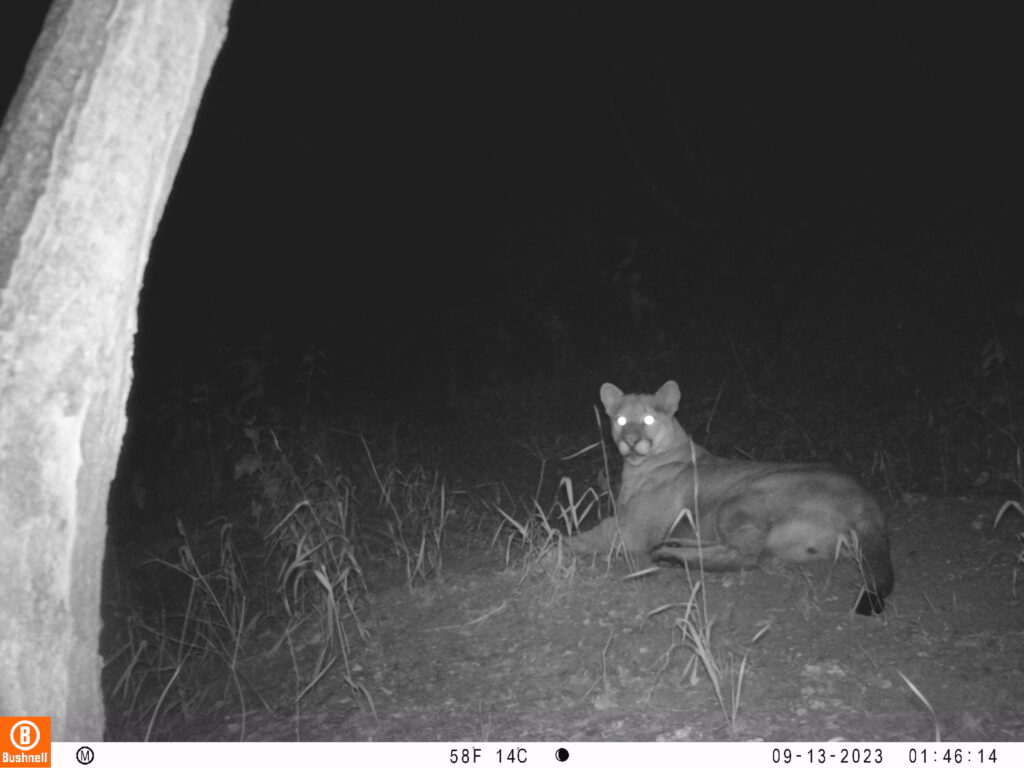
Austin Green
Yeah, we put them on a like a rotation schedule, so you set them up and then you don’t have to do much for a couple of weeks. Really, you can set them out for a longer than that. But for us, we want to make sure that we’re gathering that data and consistent. So yeah, every two weeks or so we go out and check each camera. You make sure that the batteries are in good shape, that the SD card hasn’t filled up, that you’re not getting a ton of photos of literally watching the grass grow – which can happen. And so those are kind of the major things. But the cameras themselves, they’re active at a particular site for about five weeks and then they’re rotated to a new site.
Ross Chambless
Okay. I read that you were a collaborator with the research study that came out not long ago. It was led by Cole Burton at the University of British Columbia. It examined how wild animal behavior changed during the pandemic. I’m just wondering what that collaborative experience was like. It was highlighted in The New York Times, right?
Austin Green
Yeah, it was. It was a lot of fun. Cole is an incredible scientist. He really wrote the book on how to use camera traps for research. He literally wrote the review that everyone cites. So, the opportunity to work with Cole is really great. And that was really an international effort. It had all sorts of different authors on it. And again, it really is a testament to the power of camera traps since they are fairly easy to set up, fairly easy to use, then you can have all sorts of different projects going on and all you have to do is find a way, and it sounds easier than it actually is, but find a way to gather all of that data together into one cohesive project. But yeah, that was fantastic working on that.
We found some interesting things. We didn’t find, unfortunately, you may have heard a lot of anecdotal evidence about animals retaking cities during the pandemic or something like that. We didn’t see that overall. Just because the ways that cities and people responded to the pandemic was totally based on where you live, what country you’re in, what type of restrictions are put in place locally. And so, it actually provided an opportunity to look at human recreational activity in general, even more so than the effects of a pandemic, because what it did provide was this quasi experimental situation where we had either a burst in human outdoor recreational activity in response to everyone being able to go out and experience green spaces, or the exact opposite, where complete lockdowns made it so that no one was going outside. And so, we had these before-after situations where we could more than just looking at the effects of a pandemic, look at the effects of outdoor human recreational activity in general.
And, I don’t know how much you want me to speak to the results, but we found some really interesting things. The first thing we found is that if you’re in an already kind of rural to suburban area, any increase in outdoor recreation activity tends to be detrimental for wildlife. That there’s not a lot of habituation in those particular areas. So, wildlife is a little bit more sensitive.
But what we found in more urbanized areas, so, think Salt Lake Valley, think larger cities, back east in the United States, we found the exact opposite. As human activity increased in these areas, we actually saw an increase in wildlife, both abundance and richness. So, what it really showed was a testament to animals not only their ability to adapt to humans and start utilizing us as potential resources or shields. This whole human shield hypothesis type of thing. But then also the effect of humans is context dependent. And so, what may actually occur, and what may happen with particular wildlife populations in one area isn’t at all what’s going to potentially happen in another area. And it really depends on the historical land use context of that area and not just a one size fits all type of thing.
Ross Chambless
That is really interesting, and somewhat counterintuitive, I guess. We’ll certainly put a link to that study so folks can explore it if they want.
I do to pivot a little bit to the topic of climate change, because it’s a climate change podcast. I know that some of your work has overlapped in this area. And I was reading that some of your research has suggested that climate change may actually make life tougher for urban wildlife. And I wonder if you could explain how you’ve been seeing that?
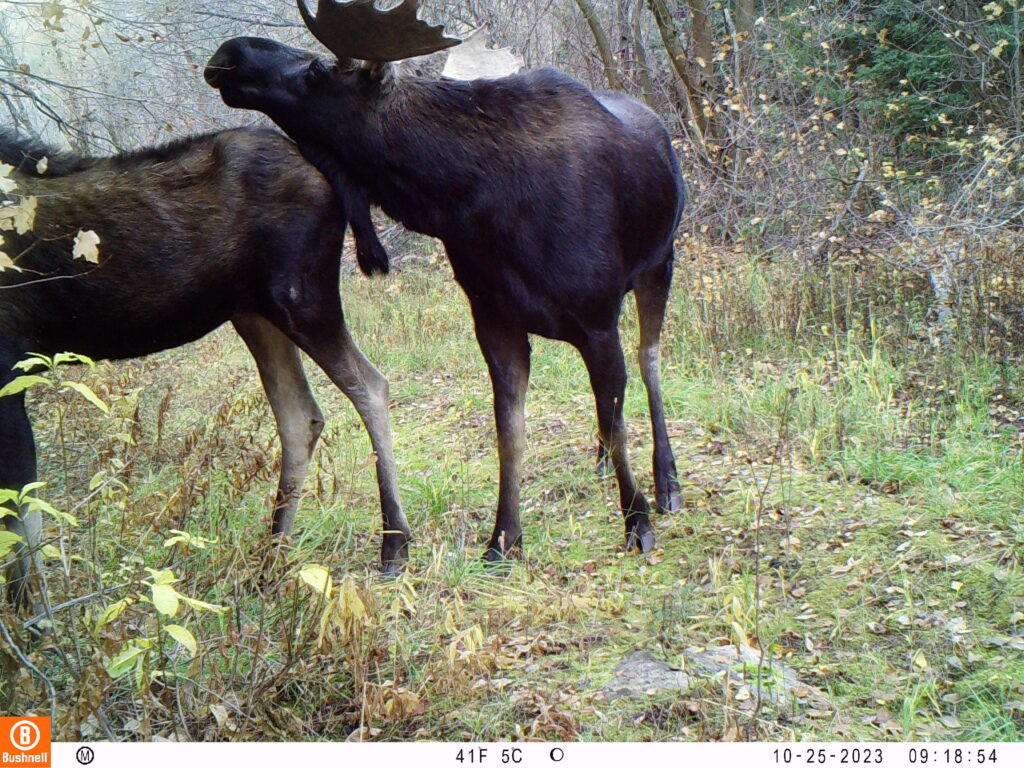
Austin Green
So, this was another large scale collaboration. This one was across multiple different universities within North America in particular. And we did a little bit of research looking at just how animals adapt to urbanization and whether or not climate has any effect on their ability to adapt to urbanization. And overall, like you would expect, if you replace a forest with cement or something like that, wildlife are going to have a hard time adapting to that, especially your larger kind of charismatic mammalian megafauna. The types of things you think about when you think about like Yellowstone National Park. They had a really hard time adapting to urbanization in general,
But it became even harder when both temperature was increased and when aridity was increased. So, in hotter, drier climates, the ability to adapt to these urban environments was more difficult for these animals than it was in already wet or cooler climates.
And, there’s a number of different things that could be related to this. There’s the whole urban heat island effect, which especially occurs late at night when, let’s be honest, that’s kind of a temporal refugia for a lot of wildlife and not just the ability to access resources and avoid humans, but also to escape the heat. So as areas are getting hotter and hotter and hotter, it’s going to be more difficult for them to actually utilize that refuge, meaning that they’re no longer going to be able to access these environments, because both through space and time, they are constrained in some way, shape or form.
And then with greenness or what we found with aridity, the big kind of take home there is just a lack of resources. And so urban areas tend to be massive kind of piles of resources. But the difficulty becomes accessing those because now you have this massive matrix of human used land, dominated land where there’s absolutely no resources. Think of impermeable surfaces. And then there’s people’s backyards. And garbage is in areas where there’s just tons of resources and multiple animals could live on that for an entire generation. And accessing those resources becomes more and more difficult in these more arid environments because there’s just more built-up spaces.
Ross Chambless
So a lot of this research was looking at different urban settings, right? And kind of comparing and contrasting those that are more arid and compared to those that weren’t and sort of over time seeing how the behavior was being affected?
Austin Green
Yep. Essentially, we looked at just how hot and on average and how wet on average a city is and we compared the ability of wildlife to adapt to that urban environment across a multitude of different cities and climates. And yeah, at the end of the day we found that the hotter you are and the more arid you are, the less likely you are to have these large megafauna being able to adapt to your particular urbanized environments.
Ross Chambless
And did you find that maybe there’s certain species that might be more impacted than others? Maybe with climate change, some species might actually benefit versus some that would really struggle?
Austin Green
Yeah, we thought that it would be something related to body size or diet or something like that. On the body size relm, that’s exactly what we found. This effect is going to get even larger, the larger body of animal that you are. And again, it kind of goes to that ability to access these resources within a matrix of disturbance is. So, if you’re a larger animal in general, you need to be active for more time because you need to cover more ground. But then you put yourself in an urban environment and half the time you’re not just covering more ground, you’re avoiding human beings at that same time. And all of the resources that you may or may not find are really concentrated within particular spots. And that can lead to competition. That can lead to ecological traps like predation and stuff like that.
So, it is just harder for the larger animals. But on the flip side, whenever you exclude larger animals or apex predators or something like that, you tend to release animals lower down in the food web. And so, you can think of your general, as what we almost call “pest species,” raccoons, coyotes, skunks. They actually tend to do pretty well in these particular environments because they are released from the pressures of larger carnivores or the resources that are limiting them are kind of lifted in these particular areas.
Ross Chambless
Yeah, absolutely. Well, it seems like the work you’re doing also is critical to understanding human impacts on biodiversity, right? And sort of the loss and decline of biodiversity overall across ecosystems. And in terms of how humans are encroaching on wild habitat and changing habitat and making it harder for wild creatures, big and small, to really to exist. So, do you perceive the work that you’re doing in that way?
Austin Green
Yeah, absolutely. So, if we were to name the lab, and my students have kind of forced me to try and name the lab, because we’ve got a Slack page or whatever. We would say, it’s the “Human Wildlife Coexistence Lab.” Because at the end of the day, that’s what we’re trying to facilitate. So, a lot of the work we do isn’t necessarily novel in the way that, hey, we now know that this animal does this thing we never would have expected.
Everything we’re looking at you can kind of see or hypothesize. But what we’re trying to identify are the solutions to those problems. And so, it’s much more on the applied realm. Now that we know it’s harder for animals to adapt in urban environments, the next step is obviously then: how do we alleviate that? Where are they adapting to hotter and more arid environments, and what are the environmental characteristics on that landscape that allow them to do so? So that we can better plan as we continue to develop in all sorts of different places?
Or, hey, we have found this association between outdoor recreational activity and human beings. Does that mean that we need to enact some type of management plan in particular areas, where it’s not necessarily that we want to limit the amount of people and traffic they come in, but what if we limit it between this window in time? So, you’re not out there actively recreating between 4 a.m. and 6 a.m., giving literally just like a gap in time to the animals utilize that space as well or something like that. Really, it’s trying to provide a solutions for these types of things more so than leading to novel scientific breakthroughs or anything like that.
Ross Chambless
Yeah, that’s quite interesting. I think that’s really important to highlight the focus on coexistence and what are solutions that could come from it. It seems like we could break it down to what can we do at a personal individual level versus what can we do as a community societal policy level. So, I’m wondering if you’re focusing on any sort of policy actions that might help in certain contexts for assisting wildlife?
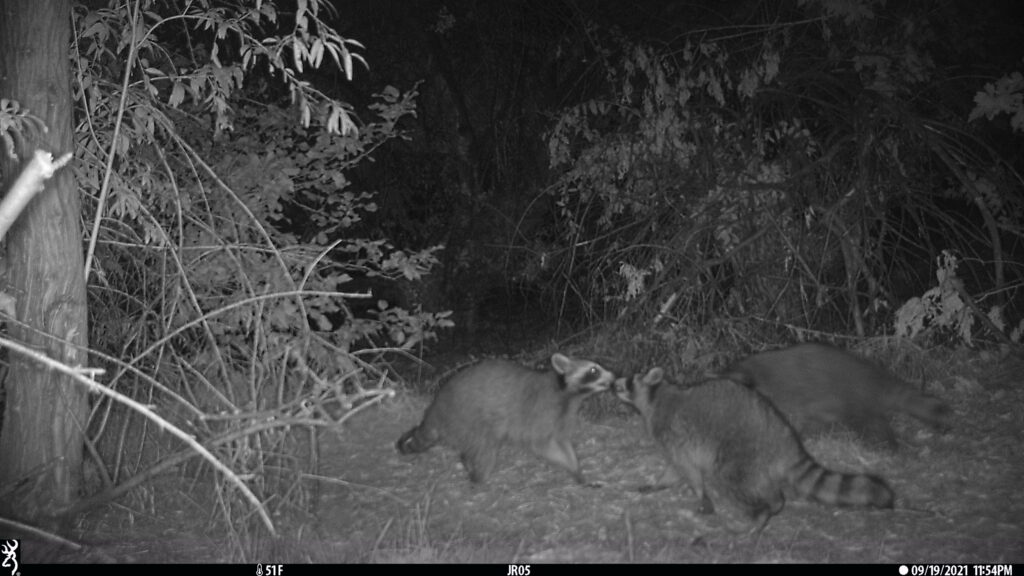
Austin Green
Yeah. So, both of my positions really kind of do not allow me to take political stances very strongly on things. So, on the political realm, the best we can do is meet with policymakers, stakeholders and provide them with the information. And whether or not that is used or not is kind of outside of our hands.
But really, the big thing that can come from that type of work is, and it’s why we put so much investment not just in the science but in the community engagement portion, is that although I might be a little bit handicapped on what I can say or do, the people that are participating in the project, the community scientists that are actively going out gathering that data, they are not. They can speak up. They can do things.
So really, that’s a major goal to is provide this information to the larger community so that they are better educated to ask for policy changes, or ask for some type of initiative to be put in place. Because now they know these are the impacts that it could potentially have. And so that’s definitely something we try to do.
And, like I said, without really advocating for anything one way or another, providing that information is really important. But then that also means we need to make sure that the projects that we’re working on are as inclusive as possible, and that every single voice within our community is actively participating. And so, it’s not just a particular sector of our community that is being able to voice out their concerns or opinions. It’s everyone in every single walk of life throughout this entire community has that same opportunity.
Ross Chambless
Well, I’m just thinking of how the work you’re doing might help to inform, for example, long-range city planning or urban development If new housing, because there there’s so much development happening, certainly we see it here in Utah, if that can be done going forward in a way that’s conscious of those impacts to wildlife and open lands, and maybe be sensitive to that.
Austin Green
Yeah, absolutely. And that is one thing we’re doing too. So, the good thing about it is that when you let people know about something, for the most part, you’re going to have a receptive audience or someone’s going to be in there who is going to listen to you. And so, we do have a number of open contracts with government agencies as they’re planning a trail network, or an expansion of this, or if they want to look at three candidate areas and identify the best one that’s going to mitigate wildlife impacts and stuff. So, we can directly work with these organizations, work with these groups to provide that information as long as we’re not providing a specific recommendation. And so, that stuff can happen. It does happen. And that’s really where we want to kind of take this in the future moving forward.
Ross Chambless
I think there are some examples already of where our community decided that we wanted to spend money and make investments in infrastructure that would assist wildlife. I’m thinking of the wildlife bridge that goes over Parley’s Canyon on the way to Park City, right. I mean, that’s one notable example. It seems like there are things like that that the public supports and seem to be working.
Austin Green
Yeah. We’ve done a little bit of work. We did work on the overpass, and actually, that was part of my PhD dissertation. But you know, the goal moving forward is there’s a plethora of data in Utah on where wildlife are, where conflicts are. And really the thing right now is it exists in a multitude of different silos. And so, getting these different organizations, getting these different groups to chat about it can really help you identify where that next overpass needs to go up, and where that can have the largest impact on wildlife movement and behavior and migration status. Which is a big thing in Utah. We have a lot of wildlife migrating through this state.
So, yeah, that data does exist. It’s not like we’re existing in an area where we don’t have that information. It’s more just integrating it all, and providing a process to best streamline where the next Parley Summit Overpass goes and or something like that. And then also showing because there’s not a ton of data, that they’re effective. So that it’s not wasted money. So, a lot of what you can do is monitor the before, during, and after of those projects, and show just how beneficial they actually can be for alleviating these pressures that we have with human wildlife conflicts.
Ross Chambless
So, just the last couple of questions want to ask is more about your work right now, mentoring young scientists, students here in the College of Science. I’m just wondering like if there’s any common challenges or questions or anything that you find that students are wrestling with? What advice do you commonly provide?
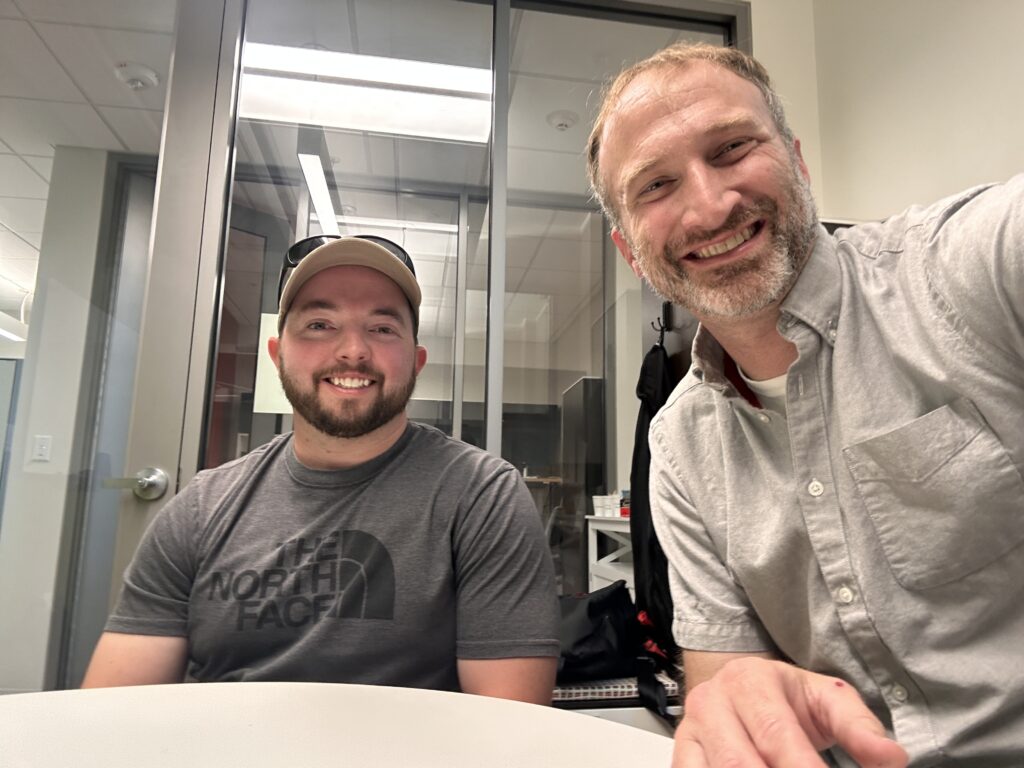
Austin Green
Yeah. Oh, man, it’s a great question. Of course, the answer is always context dependent, right? It depends on the student. But there are some like major overarching things. And especially in biology and wildlife biology in particular, it can be really difficult to know the direction you want to go with that. Do you want to try academia? Do you want to work for the government? Do you want to be working in the nonprofit sector or something like that? And the biggest thing I would recommend, and it’s basically based off my own mistakes, is know ,and try to identify and talk with the people that have the positions that you’re after and identify what they had to do.
And especially if it’s government identify the specific things, right? Because the government has a very particular like application process. They have to see certain things on your resumé. And so, I don’t qualify for a lot of government tech positions because I didn’t take the correct classes, even though I have a Ph.D. in wildlife biology that does not qualify me to work in this particular area because I didn’t take three years of field botany or something like that.
And so, identifying the qualifications before you get too far into the game is always a really important thing. And then also give yourself a chance to really kind of explore a multitude of different opportunities. Because when I was getting started, I had no idea who and what I wanted to work with. But after experiencing a multitude of different things really kind of solidified myself into whatever I was going and what I wanted to do.
And, then the last thing too, is to have fun with it. This is a fun field. It’s not necessarily like you go into it with the idea that you’re going to make a whole bunch of money or anything like that. This is a passion type of job and it’s going to be driven by your passion. It’s going to be driven by your love. And that’s what’s going to make the project work. And so, take the time to enjoy it because a lot of people don’t get to do this type of stuff. And it’s a privilege.
Ross Chambless
Yeah, absolutely. One last thing I noticed that you had mentioned. You’ve written that you were a first-generation college student and that when you came into this, you were not familiar with academic research in this realm. So, that seems very inspiring for many other too, who might be interested in getting into scientific research through your experience. And I have to think that’s rewarding for you also to be able to kind of give back what you’ve learned.
Austin Green
Yeah, I think so. I hope so. I hope that it’s like something that people can take and use towards their benefit or whatever. I mean, as far as being green about academia and how it works, I don’t think you could find a situation where someone was more green about it. I mean, I did things just because I was told to do them, where I learned what a qualifying exam was for your Ph.D. about two weeks before it was going to happen. And so there were just things like that where I had no idea how this process worked. I had no idea how applying for grad school worked. I had no idea what a postdoc was or anything like that. All these things are brand new terms. To me, this whole process was new. But at the end of the day, I knew what I wanted to do and I just kind of let that guide me.
And so, I did have a different experience. I probably drove a few of my committee members nuts because I just wasn’t approaching it in the way that is typical or standard. But I think that’s the power of it. It doesn’t have to be typical. It doesn’t have to be standard. You can do it in a multitude of different ways. And it can still work out for you. And that’s the good thing about the whole process and about science in general, is that it’s okay if you’re doing it “incorrectly” or if you’re doing it “against the grain.” Because that can actually provide some really cool insights.
Ross Chambless
Awesome. Well, Austin Green, thank you very much. I really enjoyed our conversation.
Austin Green
Thank you very much for having me. This is a privilege.
Related Links and Resources:
https://sagelandcollaborative.org/wasatch-wildlife-watch